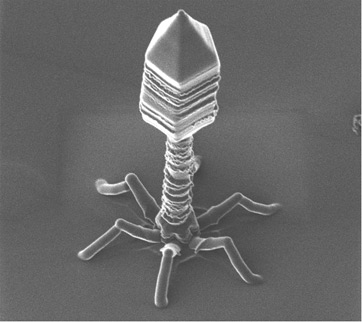Bacteriology
Did you know that you're mostly a microbe? There are more microbial cells in your body than your own cells. Microbes are found everywhere: in and on your body, in streams and rocks, on your smartphone screen, and in your food. Despite their bad reputation, microbes are mostly beneficial or have a neutral effect on our lives.
Microbiology is the scientific study of these microorganisms. Microorganisms are those organisms that are too small to see with the naked eye and include things like bacteria, fungi, and viruses.
 |
Microbiologists study these organisms using tools, like microscopes, genetics, and culturing. Microscopes allow scientists to magnify microbial cells that are otherwise too small to see. Genetics and molecular biology help scientists understand the evolutionary relationships between microbes and their habitats.
Culturing is the term used to describe growing microbes, usually combined with tests to see what the microbes like to eat or what conditions they can live in. If you've ever seen a petri dish, you've seen a common place where microbes are cultivated.
 |
Most of the microbes, or bacteria, in your body are meant to be there and are called resident bacteria. These bacteria that are well-established residents of your body, especially the skin and gut. They are your first line of defense against potentially dangerous transient bacteria, meaning temporary bacteria that you might pick up from touching a door handle or being near someone who sneezes. The resident bacteria can usually out-compete the transient bacteria, preventing them from settling in and causing an infection.
So, how else do microbes help us? The next time you enjoy cheese, sausage, and beer at a party, be aware that many of the foods and drinks we enjoy are not possible without microbes. Dairy products, such as yogurt and cheese, have been made for centuries with microbes to lengthen the lifetime of milk. The process of fermentation is carried out by microbes and gives these items their characteristic taste, odor, and texture. Beer and wine also use microbes (in this case, yeasts) to produce the alcohol in those beverages.
 |
Despite all the good microbes do, when we hear news stories about microbes, it is usually about pathogens. Pathogens are the invading microbes in our bodies that make us sick. It is usually our immune system's reaction to the foreign microbial invaders that give us the crummy symptoms, like a fever or stomachache.
Infections from pathogenic bacteria can sometimes clear up on their own, or with help from antibiotics. Antibiotics are the various medicines that fight bacteria by damaging proteins, the cell wall, or carrying out other damaging attacks on bacteria. A bad side to antibiotics is that they can rarely tell the difference between good and bad bacteria. With antibiotics both resident and transient bacteria are damaged, and while it will help clear up an infection, it might also give you a bad stomachache .source: http://bit.ly/2ISNZag
Learn more about Bacteriology from experts in the world Conference on Bacteriology and Infectious Diseases
To know more visit: http://bit.ly/bacteriology2018
For enquiries contact: bacteriology@pulsusevents.org
No comments:
Post a Comment